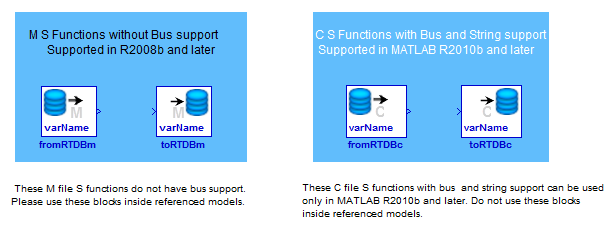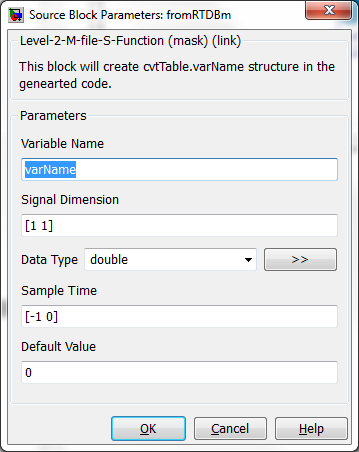Description

The
When you use the MLToolkit GUI to generate SimWB-compliant code, the software automatically replaces the relevant native Simulink source and sink blocks in your model with one of these blocks. You must manually place these blocks in your Simulink model only if you want to generate code programmatically or further customize the generated code. For example, you can specify a custom variable name or sample time for a signal.
-
The MATLAB® S-function blocks,
toRTDBm andfromRTDBm , are supported in MATLAB R2008b and later. These blocks do not support Simulink bus signals. -
The C MEX S-function blocks,
toRTDBc andfromRTDBc , are supported in MATLAB R2010b and later. In addition to numeric signals, these blocks support:-
Simulink bus signals — If you have bundled multiple signals into a single bus,
the
toRTDBc /fromRTDBc blocks can generate code for the relevant source/sink. You can access each bus element (even for nested buses) in SimWB as an RTDB variable. For example, see Bus Support in SimWB. -
Blocks that input/output strings — By default, the MLToolkit GUI will not generate code
for blocks that input/output strings. You must manually replace these blocks with
the
toRTDBc /fromRTDBc blocks, with the Treat as String Block option enabled. Then, use the MLToolkit GUI to generate code for the model. For example, see Passing Strings Between Models.
-
Simulink bus signals — If you have bundled multiple signals into a single bus,
the
Note:
Before generating code for these C MEX S-function blocks,
you must execute the createMexfunction.
This function generates the MEX files for both the C MEX S-function blocks.
|

